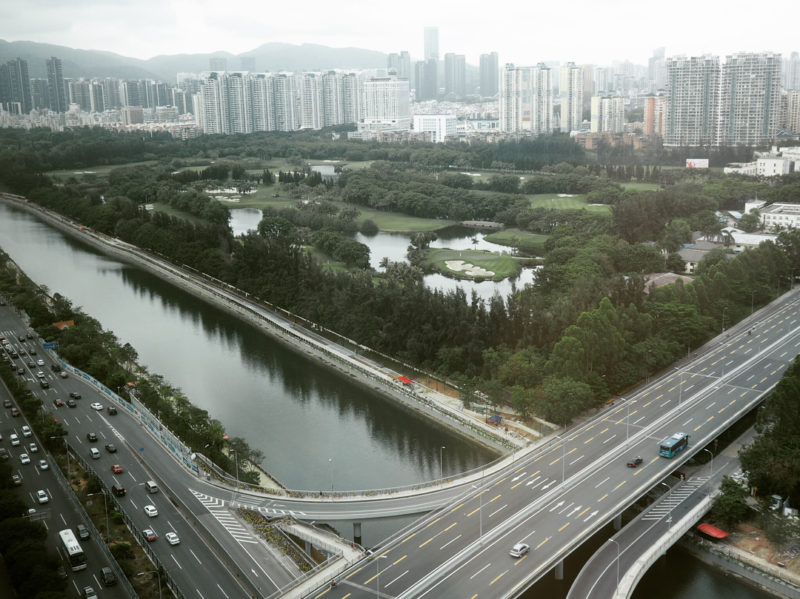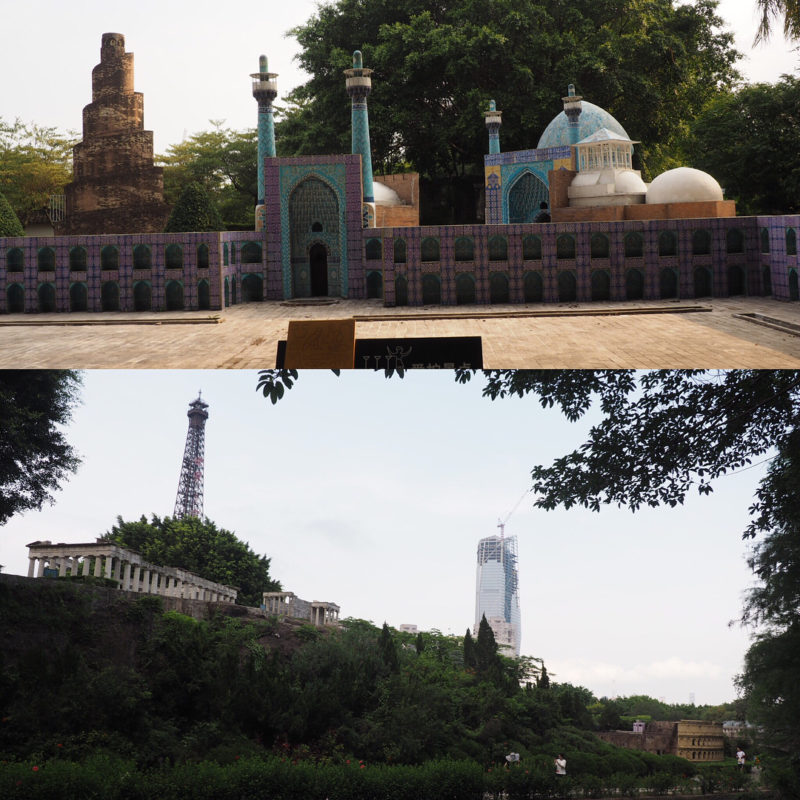Shenzhen gothic not so gothic


Editor’s note: This post includes some of our favorite Instagram fieldnotes by An Xiao Mina from her latest trip to Shenzhen. This is part one, which focuses on the aesthetics of the city.
Shenzhen at night. The urban aesthetic of China’s major cities includes a lot of buildings with light patterns, some random and some depicting words or patterns. To a Western eye, this can look like dystopia, reflecting the long representation of dark futures through East Asian architecture trends (esp HK and Tokyo). But in this view there are only two advertisements: one a straight up vertical banner ad and the other a light pattern offering a special for China Mobile service. In so many cities around the world, massive advertising is the norm, and I start to wonder which city view is more dystopic.
What will globalization with Chinese characteristics look like? One hint is the western end of Shenzhen and its many theme parks. Here’s the night time hot spot at Splendid China, a theme park for China and its minority cultures. I’m not sure why, but they also have a section for Thai culture, complete with a water splashing party every night in the theme of Songkran, the Thai new year. Thailand now receives 10 million Chinese tourists each year — nearly a third and the largest group of all international tourists to the country.

What are the iconic buildings of the world? From a Western perspective, they might include the Colosseum, the Parthenon and the Eiffel Tower. At Shenzhen’s Window of the World, which contains replicas of major world landmarks, there is also the Hakim Mosque of Iran, the Minaret of Samarra in Iraq and the Merlion of Singapore. Globalization with Chinese characteristics means Iran in particular and the Middle East more generally are key to the new Belt and Road Initiative, while Europe and Singapore host an increasing number of tourists and business people.
Continue reading: part two of this photo essay.
One comment on “Shenzhen gothic not so gothic”